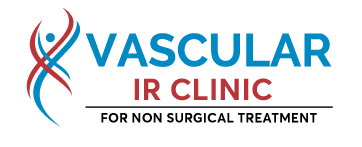About 20 per cent of the adult population is affected by varicose veins. They are shallow vessels that are abnormally lengthened, bent, tortuous dilated vessels seen on the legs and thighs. Spider veins exhibit similar characteristics but are smaller.
Varicose veins bump and grow above the surface of the skin. They can be painful, contributing to leg swelling. If left untreated, varicose veins can cause more serious medical problems, such as pain, swelling, numbness, tingling and burning sensation, muscle cramps, pigmentation, heaviness, phlebitis, inflammation, and ulcers in the legs.
What are varicose and spider veins?
Varicose veins are broadened “rope-like” veins — blood vessels — which are swollen and raised above the skin surface. They can be a flesh-coloured, dark purple, or violet, and also look like a grape cluster. They are commonly found on the backside of the calves or in the thighs. They can, however, develop from groin to ankle anywhere on the legs.
Spider veins resemble varicose veins but are narrower and closer to the skin surface. They are sometimes red or blue and behave like branches of the tree or spider webs. They may occur anywhere on the legs and can cover a very small or very large skin region. They do not boom like varicose veins but are much more visible than that.
What causes varicose veins?
Varicose veins in these blood vessels are the product of irregular inner walls or irregular valves. Blood is carried from the heart to the rest of the body by arteries and returned to the heart through the veins of the body, called the venous system. Veins have valves that act as one-way flaps to avoid piling up and pooling of the blood. When these one-way valves do not function properly, blood will instead flow backwards, dilating (enlarging) the veins and becoming varicose. In this disorder, the medical words are venous reflux or venous insufficiency.
How common are varicose veins and spider veins?
Around 40-45 per cent of women and 30-35 per cent of men in India are suffering from some form of vein problem. Varicose veins affect nearly 1 in 2 persons older than 50.
What are the risk factors for varicose veins and spider veins?
Common risk factors for varicose and spider veins include:
- Sedentary Lifestyle
- Profession involving long-standing and sitting as in teachers/IT PROFESSIONALS
- Increasing age
- Family history
- POST Pregnancy and hormonal changes
- Obesity
- Prolonged standing
- Prior deep venous thrombosis
What are the signs and symptoms of varicose veins?
For certain cases, no symptoms are caused by the varicose and spider veins. Such veins are also unattractive, though, and may become painful. During extended sitting or standing, legs with varicose veins tend to feel worse. Some of those common symptoms include:
- Aching pain
- Itching
- Burning
- Leg swelling
- Easily tired legs
- Numbness in the legs
- Leg heaviness
- MUSCLE CRAMPS
- Darkening of the skin
- Rash on the legs
- Skin ulcers
When to seek medical advice?
Measures of self-help (conservative therapy) may help alleviate varicose vein pain and can prevent it from getting worse. So if the way they look and feel is a problem or if methods of self-help fail, then it’s time to see one of our doctors.
How are varicose and spider veins treated?
Various options for treating venous reflux (backflow) and varicose veins are available. Each one has its advantages and drawbacks. Our vein experts will prescribe the appropriate treatment plan in the form of medical care, lifestyle modification, sclerotherapy, LASER treatment depending on your medical or cosmetic needs after your appointment and the ultrasound test.
WILL IT RECUR? IS IT A PERMANENT TREATMENT?
Laser treatment is the most advanced treatment available now with more than 98 % success rate. Proper care and followup give you excellent results.
Does my insurance cover treatment?
Most insurance providers cover medically required treatments for varicose veins, except in situations where conventional therapy with “compression” stockings has failed.
